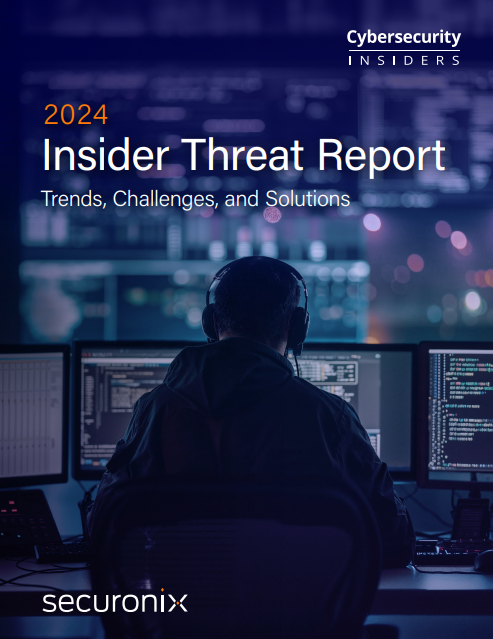Insider threats, driven by personal motivations and enabled by the rapid evolution of technology and changing hybrid work environments, present a critical challenge to organizational security. Addressing these threats necessitates a sophisticated, multi faceted approach that combines advanced detection technologies, continuous monitoring, and a strong emphasis on employee training and awareness.
This survey, capturing responses from 467 cybersecurity professionals across diverse sectors, seeks to uncover the nature of insider threat challenges faced by organizations, focusing on understanding the factors driving these threats, their detection and mitigation complexities, and the effectiveness of insider threat programs. It aims to provide insights into how organizations are adapting their strategies and solutions to effectively counter these evolving internal security risks.
Key survey findings include:
• Rise in Insider Attacks: From 2019 to 2024, the number of organizations reporting insider attacks increased from 66% of organizations to 76%, indicating a substantial increase in detected insider threats. Notably, there’s a rise in incidents with multiple attacks per year, underscoring the urgent need for enhanced detection and mitigation strategies, including continuous monitoring and proactive defenses.
• High-Risk Insiders and Motivations: There has been a marked increase in concern for malicious insiders, rising from 60% in 2019 to 74% in 2024, indicating a heightened awareness or experience of intentional insider attacks. Financial gain leads the list of motivations organizations are most concerned about.
• Detecting Insider vs. External Attacks: 90% of respondents report insider attacks as equally or more challenging to detect than external attacks, highlighting the complexity of insider threats. Only 16% of organizations consider themselves extremely effective in handling insider threats, an improvement from 11% in 2019, yet there is still significant room for enhancing threat management strategies.
• Ransomware Threat: 76% of organizations report an increasing prevalence of ransomware and triple extortion techniques in their environments, highlighting a growing cybersecurity concern. Information disclosure (56%) and unauthorized data operations (48%) are also leading concerns, emphasizing the importance of data-centric security measures and robust identity and access management controls.
• Hybrid Work and Evolving Tech: 70% of respondents express concern about insider risks in hybrid work contexts, reflecting the challenges of securing distributed, less controlled environments. A majority of 75% are concerned about the impact of emerging technologies like AI, the Metaverse, and Quantum Computing on insider threats, indicating worries about their misuse and the potential to amplify threat capabilities.
• Insider Threat Program Maturity: While 66% of organizations feel vulnerable to insider attacks, 41% of organizations have only partially implemented insider threat programs, pointing to a lack of comprehensive activity monitoring and advanced threat management. Only 29% of respondents feel fully equipped with the right tools to protect against insider threats, indicating a significant gap in many organizations’ security capabilities.
We would like to extend our sincere gratitude to Securonix for their invaluable support in conducting this research. Their expertise and commitment have been instrumental in shaping this comprehensive report.
We hope that the insights and findings presented will be helpful to our readers in fortifying their organizations against the evolving challenges posed by insider threats. Our goal is that this report serves as a crucial resource in enhancing your strategies and defenses in the battle to protect your organization’s assets and integrity against insider risks.















